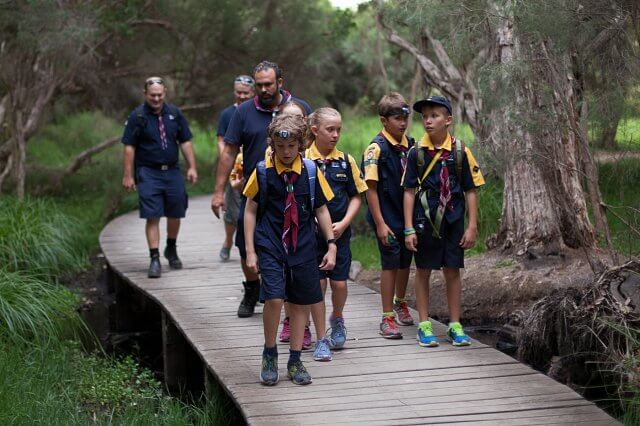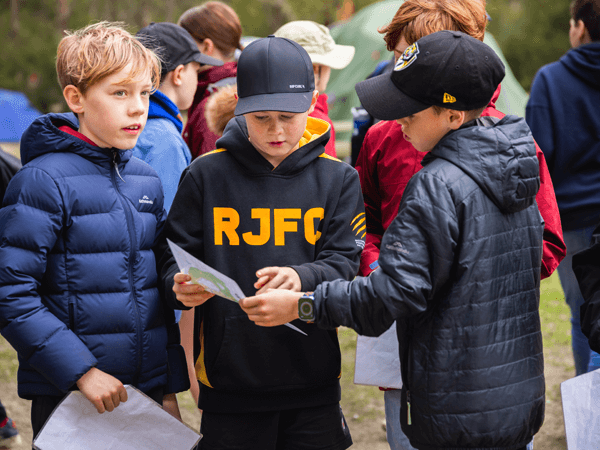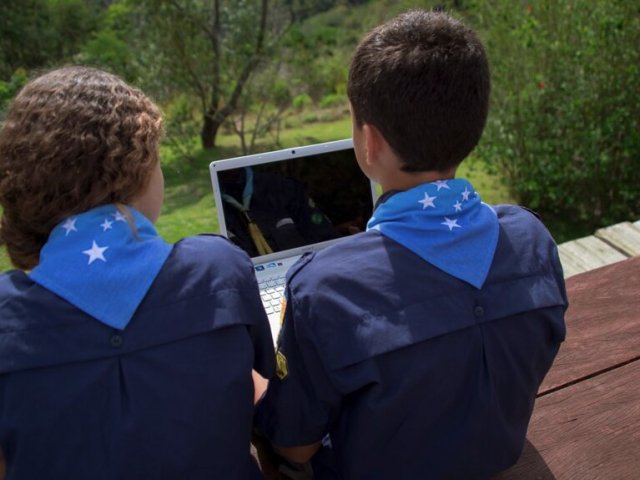Youth Program Review
A Culture of Youth Leading, Adults Supporting
![]()
What’s a culture of youth leading, adults supporting actually look, feel and sound like? This Scouts Canada articles gives a pretty good explanation of it.
If you have been to a New Program Concepts Workshop in your state, you will have heard the theme of “Youth Leading, Adults Supporting”. Or, you may have heard it talked about in other forums. In the New Program Concept Workshops, this idea is explained and discussed. As a movement primarily focused on the development of young people, Scouts Australia is reflecting on how its youth members can have greater involvement in the decisions that affect their lives in Scouting.
To this end, the YPR are looking at how the partnership and culture between youth leading and adults supporting can be well balanced.
Scouts Canada are further progressed on building a culture of youth leading and adults supporting. They call it “Youth Led”. During their recent review, a very similar review to our own Youth Program Review, and resulted in a new program called “The Canadian Path”, youth-led features as a core element. To understand more about what Youth Leading, Adults Supporting looks and feels like in Scoutiing, check out an article below from Scouts Canada. This article reflects the attitudes and culture that a potential new Scouts Australia youth program will reflect.

Youth-led – Engaging Youth in Every Adventure
Youth-led has become a buzzword in Scouting Culture lately. “Let your youth decide!”, “it’s up to the youth,” they’ll say. But why let your youth lead the program? What does “Youth-led” really mean for Scouting? Let’s dive into what this “buzzword” really means for the Scouting Movement across Canada. Sit back, grab some Scout Popcorn, and read on!
First of all, let’s take a look at what it looks like on a surface level. While it comes in many forms, Youth-led usually looks like youth deciding what adventures they want to go on. This completely changes the meaning of the program. Suddenly, the program isn’t just an activity for youth go to after school. Now it’s a hobby – something they put thought into, something that becomes a reflection of their personalities, and something that is alive and always improving and adapting for the youth it’s there for… rather than a static event to show up to. It brings the Movement back into the organization.
Okay, so going deeper into this idea, let’s examine this idea of youth leadership, through one simple example. A Patrol going camping. So here’s the scenario a Scout suggests to his Patrol – let’s call it them the Thunderbirds. The Thunderbirds want to go lightweight camping, and do it all themselves. They want to carry all their gear on a 5km hike, do all the camp set-up, cooking, program, fire maintenance, tear-down, etc. without Scouters. The Thunderbirds think “hey, that would be cool, let’s do it!” So during their next Patrol Meeting, they brainstorm what kinds of things they want to do, and what they may need to happen for the Camp to run. They decide they want to stargaze on Friday night, sleep-in Saturday morning, cook lunch over the fire, go for a day hike to practice tree identification, and lash a giant tripod. They approach their Scouter with the idea, and get her thoughts on what they’ll need to go do this camp. Their Scouter brings up things they hadn’t thought of, like creating a budget and safety plan for the camp. The Scouter gives the Scouts an example of each that she made for a previous camp, and goes through each part of the budget and safety plan with the Patrol. The Patrol then works on their safety plan, including two Scouters camping in a campsite a 10 minutes’ walk away – close enough that they’re there, but far enough to feel like they’re not. After a few more weeks of working on this Camp during their Patrol meetings, and practicing skills (like lashing and lightweight cooking), the Scouters reviewed and approved the plan, and the Outdoor Activity Application Form has been signed off by the Group Commissioner, the Patrol is ready to go Camping!
On the weekend, their pancakes end up scrambled, it rains on their hike, and they forget the bleach for their dish water… And they tell stories non-stop for half of the way home, because it was unlike anything they had ever done before, and they want to do it every weekend after that… and then sleep for the second half of the way home. It was a success. That’s the thing with Youth-led. It’s not about the pancakes being perfectly round, or the activities being picture-perfect. It’s about the youth – having a great time learning through fun, safe Scouting Adventures. Notice the Scouter’s role in this – they gave the Patrol space to identify an adventure they wanted to do, and then supported them as they needed in order for that Adventure to happen safely and successfully. When Scouters can set-up their youth to successfully go on a Youth-led adventure, magic happens. Because youth gain so much confidence in their ability to figure things out, and get excited by the world of opportunities that opens up when they’re in the driver’s seat of the program.
If only every camp could be as magical as the one this Patrol had. That’s what Youth-led is about; it makes every adventure the personal project of the youth involved. Which means that it’s far more exciting, and the lessons learned from the review are far more meaningful to the Scouts because they’re learned from first hand experience.
Being such a core part of our program, Youth-led has benefits that go much deeper than just the direct program that the Scouts experience. A couple examples include safety and membership… in the process of creating that camp plan, the Scouts learned a significant amount about being safety minded, having an emergency plan, etc. This will help them lead safer adventurers as their personal journeys call for more advanced, independent adventures. Having a Youth-led program will also have a massively positive impact on our retention and recruitment of youth, as it will always be interesting, challenging, and fun for the youth. Going even further, it’s only natural that parents who see their youth working on these kinds of epic adventures, will find themselves bringing gear to and from camp… and we all know where that leads – Scouters! As the youth take on the leadership of their Sections, and their personal progression goals, many parents will naturally find themselves helping out though supporting their youth, which is a great first step to becoming a parent helper, non-Section Scouter, or Section Scouter. And this just scratching the surface of the indirect benefits of Youth-led.
That’s what Youth-led is about; it makes every adventure the personal project of the youth involved.
“Youth-led” isn’t just a buzzword or marketing slogan. It’s a fundamental philosophy to our program, and one of the keys to a fast-growing movement across Canada. This all ties back to why we’re here; to help create well rounded youth who are better prepared for success in the world. And Youth-led is one of the fundamental parts about our program that helps us do that. So go back to your Section, and look at how you could better execute Youth-led, then get ready for some awesome Adventures!
This article was written by Jason Gingrich, a Scouts Canada Youth Spokesperson and Venturer Scout. The article originally appeared as Youth Led – Engaging Youth in Every Adventure on Scouting Life, a publication by Scouts Canada.



